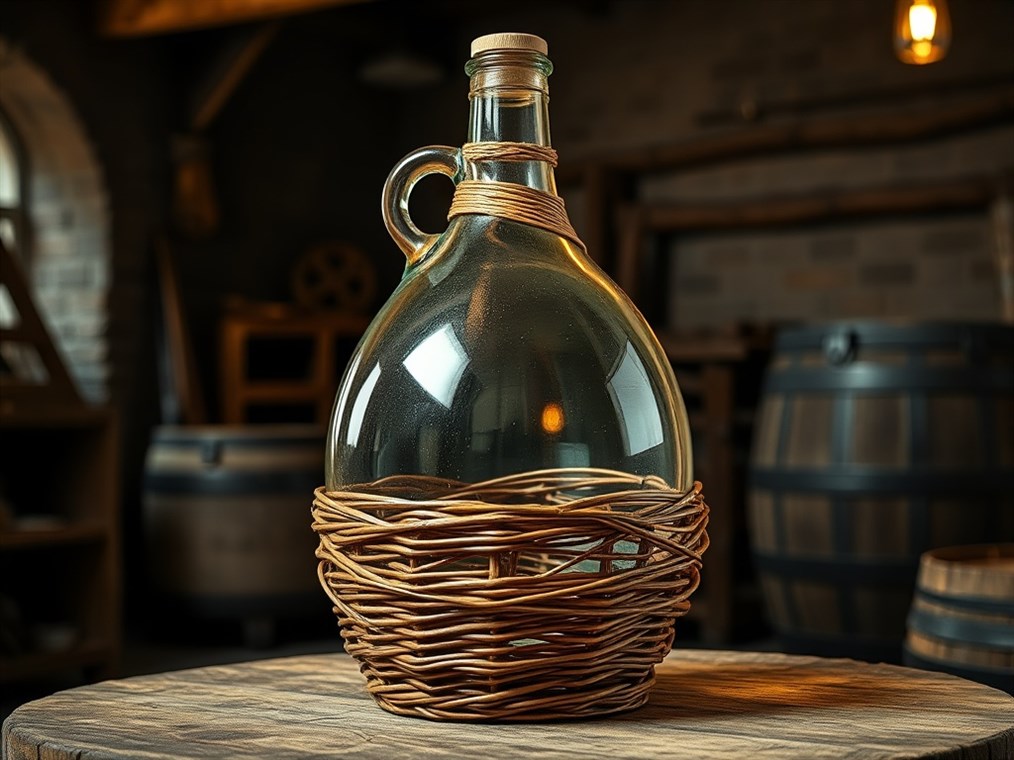Why is it Called a Demijohn? The Story Behind That Big, Round Bottle
Ever seen one of those big, round bottles, often wrapped in wicker, and wondered what they’re called and where that name even comes from? That’s a demijohn, and its story is a fun mix of language twists, maybe a royal visit, and a bit of good old-fashioned historical head-scratching.
So, what is a demijohn? Simply put, it’s a large bottle with a narrow neck, usually made of glass, and those wicker baskets you often see them in? That’s not just for looks. It helps protect them! These bottles are workhorses, meant for storing and moving liquids – think wine, water, even chemicals back in the day. We’re talking anywhere from a gallon to a whopping sixteen gallons! You might also hear them called carboys or dame-jeannes – fancy, right?
Now, about that name… “Demijohn” is generally believed to come from the French term “dame-jeanne,” which translates to “Lady Jane.” The first time “demijohn” popped up in writing was way back in 1769. But why Lady Jane? That’s where things get interesting.
There’s this great story, a legend really, about Queen Jane of France. Apparently, she was caught in a storm in 1347 and took shelter in a glassblower’s workshop. She was so impressed by these big bottles that she inspired the glassblower to name them after her. The story goes that he initially called them “Reine Jeanne” (Queen Jane), but she was modest and suggested “Dame Jeanne” (Lady Jane) instead. Cute, huh?
Of course, there are other ideas floating around. Some say “demijohn” came about through a sort of linguistic misunderstanding, combining “dame-jeanne” with “demi-,” meaning “half.” The idea was that it was a “half-sized John” bottle, but honestly, there’s no real proof of a “John” bottle ever existing. Seems a bit far-fetched, doesn’t it?
Then there’s the theory that the name has Eastern roots, maybe even Egyptian! Apparently, similar bottles were called “damagan” in Egypt and were brought to Europe during the Crusades. And get this – the wicker wrapping? That might have come from Egypt, too!
And let’s not forget “carboy,” that other name for a demijohn. That one has Persian roots! It comes from the Persian word “qarābah,” meaning “big jug,” which then became “qarrāba” in Arabic. Language is wild, isn’t it?
While we can’t say for sure where the name “demijohn” comes from, the French “dame-jeanne” seems like the most likely origin. And that Queen Jane story? Even if it’s not entirely true, it’s a fun little piece of history to imagine.
No matter where the name came from, the demijohn has been around for ages, faithfully storing and transporting liquids. These days, you’ll often find antique demijohns used as decorations. They add a cool, vintage vibe to any space. Whether you use one as a statement piece, a unique vase, or just collect them for their history, the demijohn is sure to spark conversation with its quirky shape and even quirkier name.

